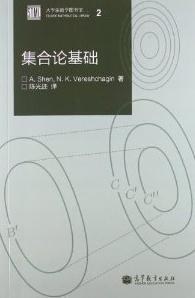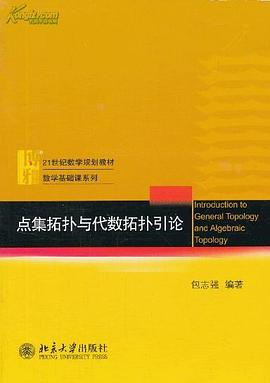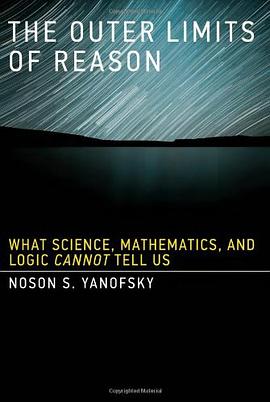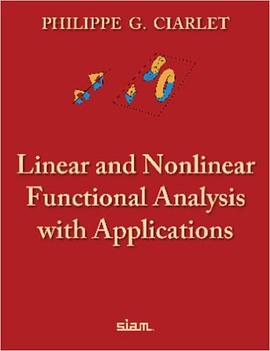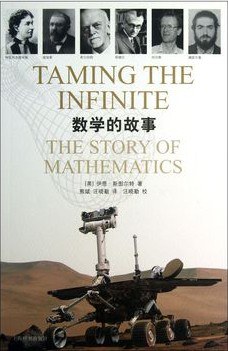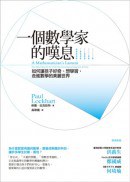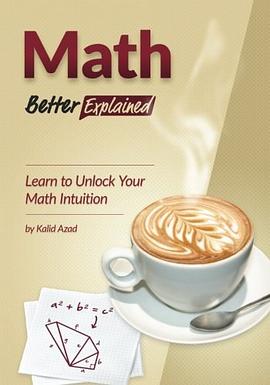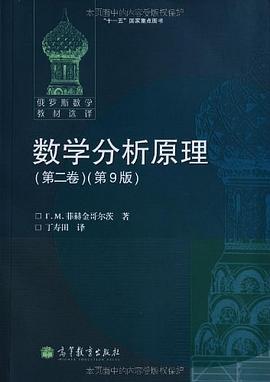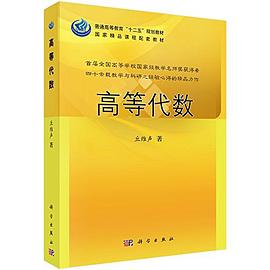

PREFACE
CHAPTER 0 PRELIMINARIES
0.0 Introduction
0.1 Reading mathematics
0.2 Quantifiers and negation
0.3 Set theory
0.4 Functions
0.5 Real numbers
0.6 Infinite sets
0.7 Complex numbers
CHAPTER 1 VECTORS, MATRICES, AND DERIVATIVES
1.0 Introduction
1.1 Introducing the actors: points and vectors
1.2 Introducing the actors: matrices
1.3 Matrix multiplication as a linear transformation
1.4 The geometry of Rn
1.5 Limits and continuity
1.6 Four big theorems
1.7 Derivatives in several variables as linear transformations
1.8 Rules for computing derivatives
1.9 The mean value theorem and criteria for differentiability
1.10 Review exercises for chapter 1
CHAPTER 2 SOLVING EQUATIONS
2.0 Introduction
2.1 The main algorithm: row reduction
2.2 Solving equations with row reduction
2.3 Matrix inverses and elementary matrices
2.4 Linear combinations, span, and linear independence
2.5 Kernels, images, and the dimension formula
2.6 Abstract vector spaces
2.7 Eigenvectors and eigenvalues
2.8 Newton's method
2.9 Superconvergence
2.10 The inverse and implicit function theorems
2.11 Review exercises for chapter 2
CHAPTER 3 MANIFOLDS, TAYLOR POLYNOMIALS,QUADRATIC FORMS,AND CURVATURE
3.0 Introduction
3.1 Manifolds
3.2 Tangent spaces
3.3 Taylor polynomials in several variables
3.4 Rules for computing Taylor polynomials
3.5 Quadratic forms
3.6 Classifying critical points of functions
3.7 Constrained critical points and Lagrange multipliers
3.8 Geometry of curves and surfaces
3.9 Review exercises for chapter 3
CHAPTER 4 INTEGRATION
4.0 Introduction
4.1 Defining the integral
4.2 Probability and centers of gravity
4.3 What functions can be integrated?
4.4 Measure zero
4.5 Fubini's theorem and iterated integrals
4.6 Numerical methods of integration
4.7 Other pavings
4.8 Determinants
4.9 Volumes and determinants
4.10 The change of variables formula
4.11 Lebesgue integrals
4.12 Review exercises for chapter 4
CHAPTER 5 VOLUMES OF MANIFOLDS
5.0 Introduction
5.1 Parallelograms and their volumes
5.2 Parametrizations
5.3 Computing volumes of manifolds
5.4 Integration and curvature
5.5 Fractals and fractional dimension
5.6 Review exercises for chapter 5
CHAPTER 6 FORMS AND VECTOR CALCULUS
6.0 Introduction
6.1 Forms on Rn
6.2 Integrating form fields over parametrized domains
6.3 Orientation of manifolds
6.4 Integrating forms over oriented manifolds
6.5 Forms in the language of vector calculus
6.6 Boundary orientation
6.7 The exterior derivative
6.8 Grad, curl, div, and all that
6.9 Electromagnetism
6.10 The generalized Stokes's theorem
6.11 The integral theorems of vector calculus
6.12 Potentials
6.13 Review exercises for chapter 6
APPENDIX: ANALYSIS
A.0 Introduction
A.1 Arithmetic of real numbers
A.2 Cubic and quartic equations
A.3 Two results in topology: nested compact sets and Heine-Borel
A.4 Proof of the chain rule
A.5 Proof of Kantorovich's theorem
A.6 Proof of lemma 2.9.5 (superconvergence)
A.7 Proof of differentiability of the inverse function
A.8 Proof of the implicit function theorem
A.9 Proving equality of crossed partials
A.10 Functions with many vanishing partial derivatives
A.11 Proving rules for Taylor polynomials; big O and little o
A.12 Taylor's theorem with remainder
A.13 Proving theorem 3.5.3 (completing squares)
A.14 Geometry of curves and surfaces: proofs
A.15 Stirling's formula and proof of the central limit theorem
A.16 Proving Fubini's theorem
A.17 Justifying the use of other pavings
A.18 Results concerning the determinant
A.19 Change of variables formula: a rigorous proof
A.20 Justifying volume 0
A.21 Lebesgue measure and proofs for Lebesgue integrals
A.22 Justifying the change of parametrization
A.23 Computing the exterior derivative
A.24 The pullback
A.25 Proving Stokes's theorem
BIBLIOGRAPHY
PHOTO CREDITS
INDEX
· · · · · · (收起)
CHAPTER 0 PRELIMINARIES
0.0 Introduction
0.1 Reading mathematics
0.2 Quantifiers and negation
0.3 Set theory
0.4 Functions
0.5 Real numbers
0.6 Infinite sets
0.7 Complex numbers
CHAPTER 1 VECTORS, MATRICES, AND DERIVATIVES
1.0 Introduction
1.1 Introducing the actors: points and vectors
1.2 Introducing the actors: matrices
1.3 Matrix multiplication as a linear transformation
1.4 The geometry of Rn
1.5 Limits and continuity
1.6 Four big theorems
1.7 Derivatives in several variables as linear transformations
1.8 Rules for computing derivatives
1.9 The mean value theorem and criteria for differentiability
1.10 Review exercises for chapter 1
CHAPTER 2 SOLVING EQUATIONS
2.0 Introduction
2.1 The main algorithm: row reduction
2.2 Solving equations with row reduction
2.3 Matrix inverses and elementary matrices
2.4 Linear combinations, span, and linear independence
2.5 Kernels, images, and the dimension formula
2.6 Abstract vector spaces
2.7 Eigenvectors and eigenvalues
2.8 Newton's method
2.9 Superconvergence
2.10 The inverse and implicit function theorems
2.11 Review exercises for chapter 2
CHAPTER 3 MANIFOLDS, TAYLOR POLYNOMIALS,QUADRATIC FORMS,AND CURVATURE
3.0 Introduction
3.1 Manifolds
3.2 Tangent spaces
3.3 Taylor polynomials in several variables
3.4 Rules for computing Taylor polynomials
3.5 Quadratic forms
3.6 Classifying critical points of functions
3.7 Constrained critical points and Lagrange multipliers
3.8 Geometry of curves and surfaces
3.9 Review exercises for chapter 3
CHAPTER 4 INTEGRATION
4.0 Introduction
4.1 Defining the integral
4.2 Probability and centers of gravity
4.3 What functions can be integrated?
4.4 Measure zero
4.5 Fubini's theorem and iterated integrals
4.6 Numerical methods of integration
4.7 Other pavings
4.8 Determinants
4.9 Volumes and determinants
4.10 The change of variables formula
4.11 Lebesgue integrals
4.12 Review exercises for chapter 4
CHAPTER 5 VOLUMES OF MANIFOLDS
5.0 Introduction
5.1 Parallelograms and their volumes
5.2 Parametrizations
5.3 Computing volumes of manifolds
5.4 Integration and curvature
5.5 Fractals and fractional dimension
5.6 Review exercises for chapter 5
CHAPTER 6 FORMS AND VECTOR CALCULUS
6.0 Introduction
6.1 Forms on Rn
6.2 Integrating form fields over parametrized domains
6.3 Orientation of manifolds
6.4 Integrating forms over oriented manifolds
6.5 Forms in the language of vector calculus
6.6 Boundary orientation
6.7 The exterior derivative
6.8 Grad, curl, div, and all that
6.9 Electromagnetism
6.10 The generalized Stokes's theorem
6.11 The integral theorems of vector calculus
6.12 Potentials
6.13 Review exercises for chapter 6
APPENDIX: ANALYSIS
A.0 Introduction
A.1 Arithmetic of real numbers
A.2 Cubic and quartic equations
A.3 Two results in topology: nested compact sets and Heine-Borel
A.4 Proof of the chain rule
A.5 Proof of Kantorovich's theorem
A.6 Proof of lemma 2.9.5 (superconvergence)
A.7 Proof of differentiability of the inverse function
A.8 Proof of the implicit function theorem
A.9 Proving equality of crossed partials
A.10 Functions with many vanishing partial derivatives
A.11 Proving rules for Taylor polynomials; big O and little o
A.12 Taylor's theorem with remainder
A.13 Proving theorem 3.5.3 (completing squares)
A.14 Geometry of curves and surfaces: proofs
A.15 Stirling's formula and proof of the central limit theorem
A.16 Proving Fubini's theorem
A.17 Justifying the use of other pavings
A.18 Results concerning the determinant
A.19 Change of variables formula: a rigorous proof
A.20 Justifying volume 0
A.21 Lebesgue measure and proofs for Lebesgue integrals
A.22 Justifying the change of parametrization
A.23 Computing the exterior derivative
A.24 The pullback
A.25 Proving Stokes's theorem
BIBLIOGRAPHY
PHOTO CREDITS
INDEX
· · · · · · (收起)
具体描述
用户评价
评分
##勘误:http://matrixeditions.com/errata.html
评分线性方程是高斯算法,而非线性问题是牛顿算法,牛顿算法在隐函数定理和逆函数定理证明中比较Picard迭代收敛更快
评分##勘误:http://matrixeditions.com/errata.html
评分线性方程是高斯算法,而非线性问题是牛顿算法,牛顿算法在隐函数定理和逆函数定理证明中比较Picard迭代收敛更快
评分线性方程是高斯算法,而非线性问题是牛顿算法,牛顿算法在隐函数定理和逆函数定理证明中比较Picard迭代收敛更快
评分线性方程是高斯算法,而非线性问题是牛顿算法,牛顿算法在隐函数定理和逆函数定理证明中比较Picard迭代收敛更快
评分##勘误:http://matrixeditions.com/errata.html
评分##勘误:http://matrixeditions.com/errata.html
评分线性方程是高斯算法,而非线性问题是牛顿算法,牛顿算法在隐函数定理和逆函数定理证明中比较Picard迭代收敛更快
相关图书
本站所有内容均为互联网搜索引擎提供的公开搜索信息,本站不存储任何数据与内容,任何内容与数据均与本站无关,如有需要请联系相关搜索引擎包括但不限于百度,google,bing,sogou 等
© 2025 book.tinynews.org All Rights Reserved. 静思书屋 版权所有



